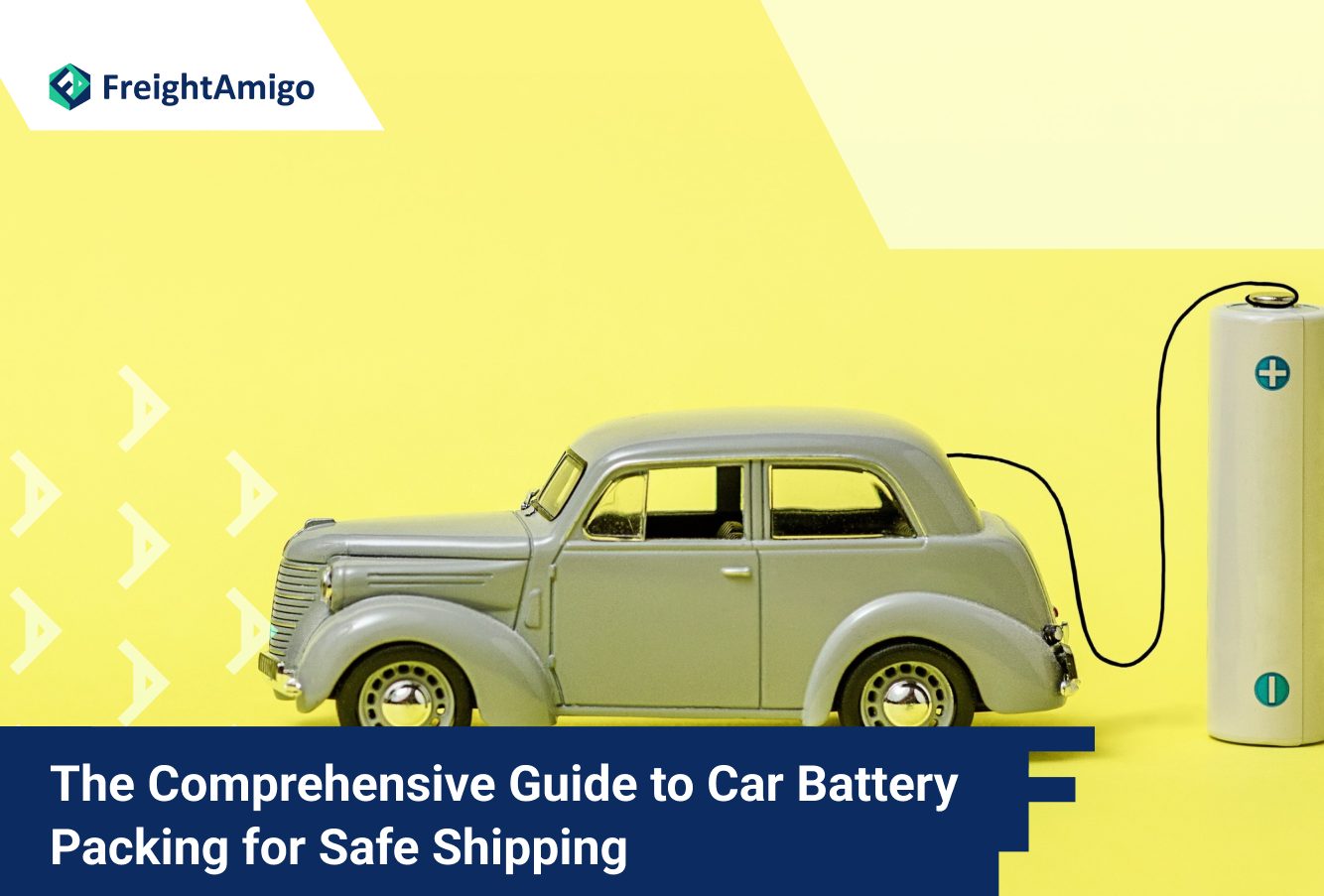Author Name: Aurora Park – Marketing Analyst at FreightAmigo
When it comes to shipping car batteries, proper packaging is crucial. Car batteries are considered hazardous materials due to their potential to short-circuit and contain corrosive liquids. Shipping them incorrectly can lead to injuries or property damage. In this comprehensive guide, we will walk you through the process of properly packing and shipping car batteries, while adhering to the necessary regulations for a smooth and safe shipping.
Want to compare the best Express, Air Freight, Sea Freight, Rail Freight & Trucking rates so as to have better control on cost?
Why Proper Battery Packing is Important
Car batteries, classified as wet batteries, require special attention when it comes to packaging and shipping. Failure to adhere to the appropriate regulations and packaging requirements can result in mishaps during transportation. By following the guidelines outlined in this article, you can ensure that your car batteries are handled safely and reach their destination without any issues.
Packaging Wet Cell Batteries
To properly package wet cell batteries for shipment, follow the steps below:
- Container Selection: Use containers specifically designed for battery packaging, including metal containers with acid/alkali leak-proof liners. Ensure that the containers are sealed to prevent any leakage during transportation.
- Secure Fastening: Fasten the batteries securely in the container, ensuring that the fill openings and vents face upwards. This prevents the risk of short-circuiting or overheating during transit.
- Multiple Batteries: If shipping multiple batteries, position them side by side and separate them with nonconductive dividers. This helps to prevent contact between batteries and minimizes the risk of damage.
- Outer Packaging: Place the packaged batteries in a sturdy outer container. This provides an additional layer of protection during transportation.
- Labeling: Clearly label the outer container as “Fragile” and “This Side Up” to ensure careful handling and maintain an upright position.
For non-spillable wet batteries, which are marked as “NONSPILLABLE” or “NONSPILLABLE BATTERY,” the packaging requirements are less stringent, and no Shipper’s Declaration for Dangerous Goods is required.
Packaging Lithium Car Batteries
When it comes to lithium car batteries, additional precautions must be taken due to their higher energy density. These batteries are commonly found in electric vehicles and require specific handling during transportation.
Packaging Requirements
To pack lithium car batteries for transport, follow these guidelines:
- Battery Removal: Remove the car battery from the vehicle before packaging it for transport.
- Terminal Protection: Cover the battery terminals with non-conductive materials to prevent short circuits during transit.
- Isolation: Keep the batteries separated from metals and other materials that could potentially cause a short circuit.
- Packaging: Place the battery in a sturdy container made of hard plastic or fiberboard. This container should then be placed inside a durable cardboard box for added protection.
It is essential to familiarize yourself with specific lithium-ion battery regulations and consult with FreightAmigo experts to ensure compliance with all shipping requirements.
Packing Multiple Car Batteries
Shipping multiple car batteries simultaneously can be done by placing them on a pallet. Follow these steps to pack and secure multiple car batteries:
- Pallet Preparation: Cover the bottom of the pallet with a sheet of sturdy cardboard to provide a stable base.
- Battery Placement: Place the individually packaged car batteries on the pallet.
- Dividers: Insert sheets of cardboard or waffle board between each level of batteries to prevent contact and minimize the risk of damage.
- Secure Wrapping: Wrap the entire pallet, including the car batteries, with a protective plastic film to ensure everything remains in place during transit.
Conclusion
Proper packaging is vital when shipping car batteries, as they are classified as hazardous materials. By following the regulations set by the respective authorities and adhering to the guidelines provided in this comprehensive guide, you can ensure the safe shipping of car batteries. Remember to select appropriate containers, secure the batteries properly, and label the packages accordingly. Additionally, consult the specific regulations for shipping lithium car batteries to ensure compliance. With the right precautions and attention to detail, you can safely ship car batteries to their intended destinations with FreightAmigo.
There Are Different Options For Cargo Transportation. If You Want To Choose The Most Convenient And Suitable Solution, It Is Best To Have The Full Support Of Logistics Experts! If You Are Planning To Ship Goods Overseas, Please Go To The FreightAmigo Page For Inquiries.
===
Popular Shipping Routes:
Shipping from Hong Kong to the United States
Shipping from Hong Kong to Canada
===
If you have any inquiries on logistics/supply chain, feel free to contact FreightAmigo now:
Chat with us online OR Hotline: +852 28121686 OR WhatsApp: +852 27467829









































